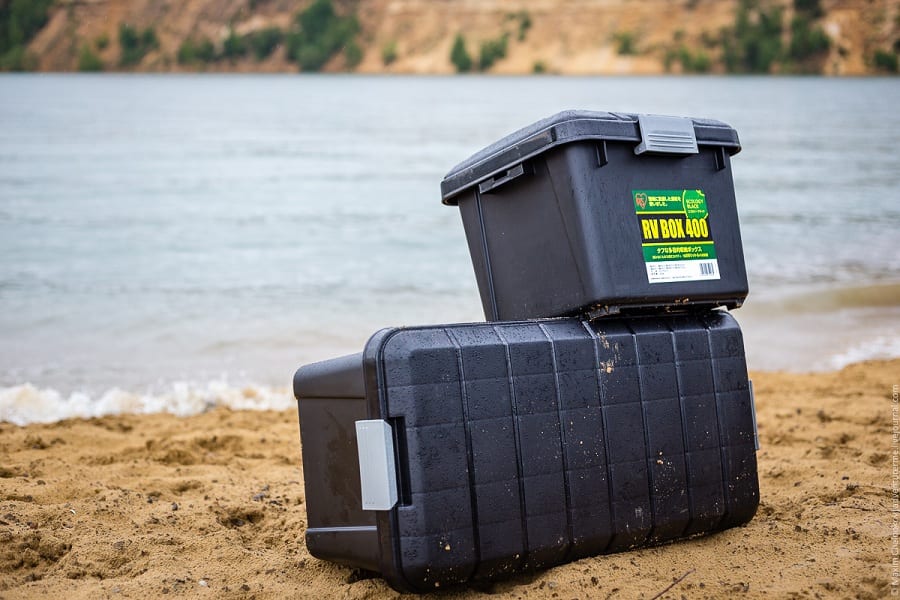An RV’s battery is one of its most treasured parts as it not only keeps all of your creature comforts powered up but helps you move as well.
Whether it’s the house battery or the starting battery, having a battery box to keep them protected is a must-have, but this often underrated accessory is left to the last minute.
What is an RV battery box for? A battery box is used to cover the battery and is commonly found over a standard RV house battery.
They encase the battery so it’s protected, prevent leaks and spills, make it safer for operation, and manage the power output and supply of electricity from the battery itself.
If you know very little about this important accessory, it’s time to get schooled, and we’ve got the essential list of battery box facts to help you out.
The more you understand about the RV battery box the better equipped you’ll be to find the right fit, so read on to see what we’ve found.
If you’d like to see a graphical breakdown of the RV battery box, we got you covered:

Share this Image On Your Site
Contents
The Facts on Your RV Battery Box
The RV battery box might not be the most exciting part of the vehicle but it’s essential for responsible and safe management of the power supply.
These are some facts about battery boxes that can steer you in the right direction to choosing the right one and teach you what they’re all about.
#1 They Come in Different Sizes
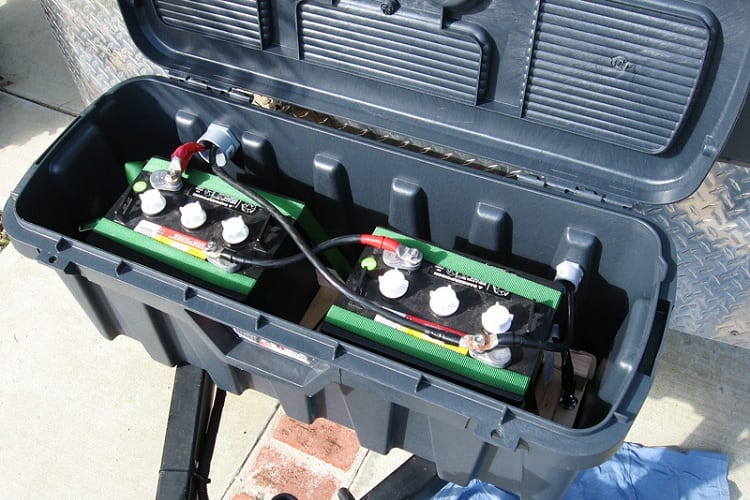
One of the biggest mistakes you can make when choosing a battery box for your RV is looking at the features first, rather than whether or not it’s a good fit.
A battery is categorized by its size in two areas, with the actual dimensions of the battery and the capacity of it both to be considered.
First, you’ll need to measure the dimensions of the house battery and see if the box comes with any recommendations as to compatible batteries. Secondly, you should choose one that suits the capacity of the battery as well.
This is commonly rated as Ah and most battery boxes are suitable for between 100 to 120 Ah maximum.
#2 Their Outputs Are All Unique
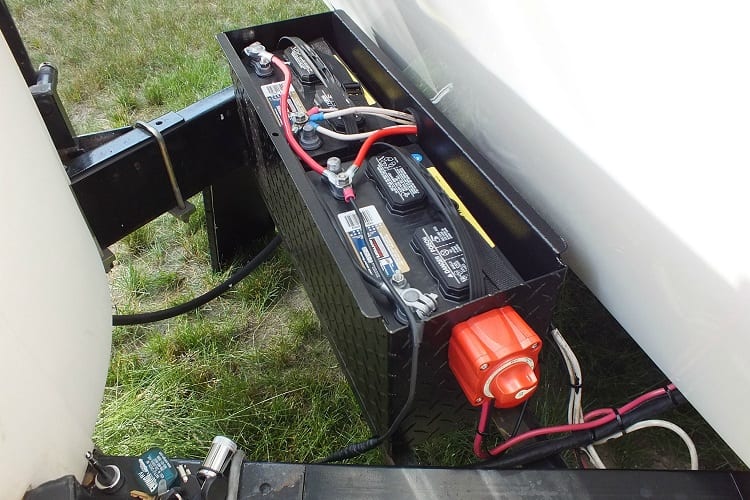
The most important feature of a battery box will be its outputs and it’s important to choose the ones that will meet your requirements.
Before going ahead, make a note of the nature and number of the absolute minimum devices you plan on connecting to it, and let this be your guide instead.
What this looks like will be different for every camper, with some people needing just 12V outlets and others preferring some USB slots as well.
The 12V slots could be merit plugs or cigarette plugs or something different altogether, so this part of the buying process will take the most brainpower.
Think also about the use of adapters and if they’ll help your battery box supply you with everything you need without overloading it.
#3 You Can Use Everything Straight From the Box
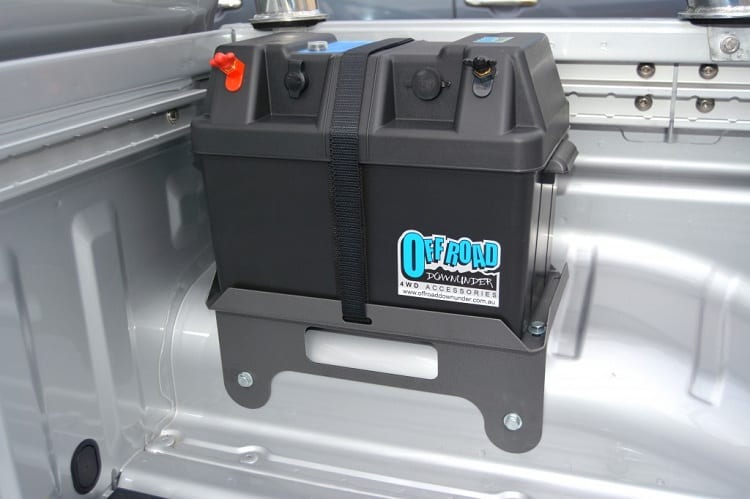
At first glance, it might seem like the battery box is a bulky and impractical device.
However, these cases have been designed to make power connections easy and it means you can plug whatever it is your need straight into the box without a hassle.
A battery box comes with holes and spaces for the cables to go, and many with descriptions so you know what’s what.
You’ll connect whatever it is you need to the battery box and it will connect it to the battery inside, so there’s no need to fiddle around when you want to hook something up.
#4 The Handles Matter
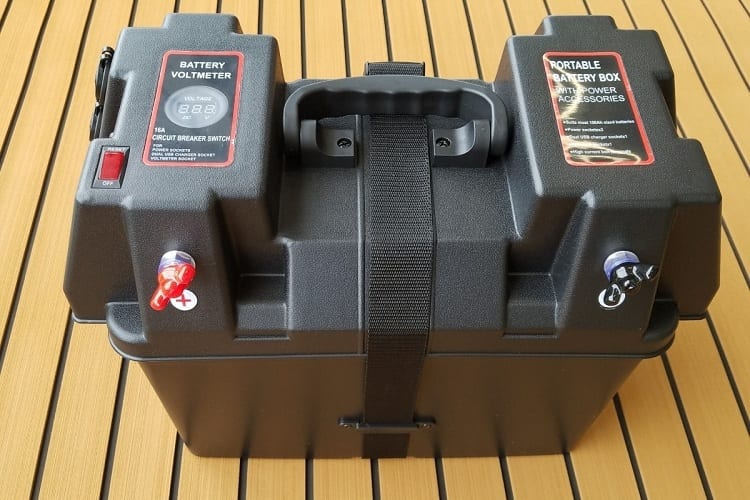
When you’re trying to find a good battery box, it’s normal to think first about the specs rather than how you’ll be able to carry it.
However, when you’re transporting around a portable battery for your RV, you want to make sure it’s easy to do, as these necessary devices can weigh more than you realize.
Therefore, look at the handles of a battery box and think about whether they’ll help or hinder when you’re trying to carry it around the campsite.
A handle on top that folds down when not in use is the preferred option for easy transport, otherwise one on either side is the next best thing.
#5 Prices and Quality Do Vary
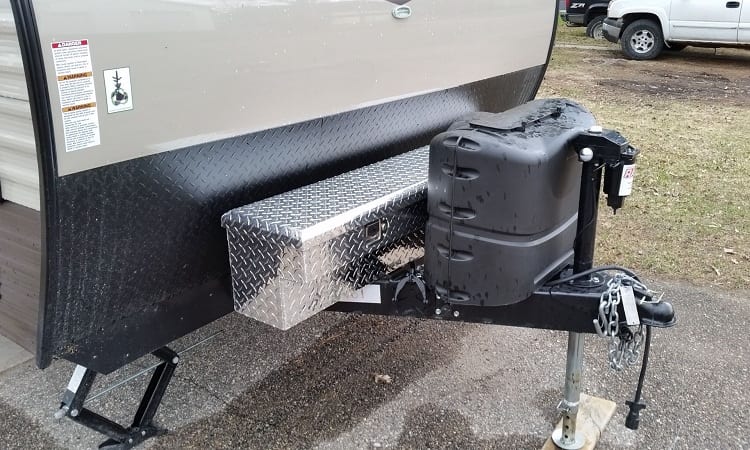
There are many RV battery boxes on the market and they vary dramatically in price and quality which makes it even harder to find the right one.
At a minimum, you can purchase a cheap battery box for around $70 and the higher priced items range upwards of $500.
This is one of those RV items where it’s important not to skimp but there’s no need to get the best of the best.
For a quality battery box, you can expect to spend around $150, provided it meets the requirements of you and the deep cycle battery it’ll be housing.
#6 Inverter or Not?
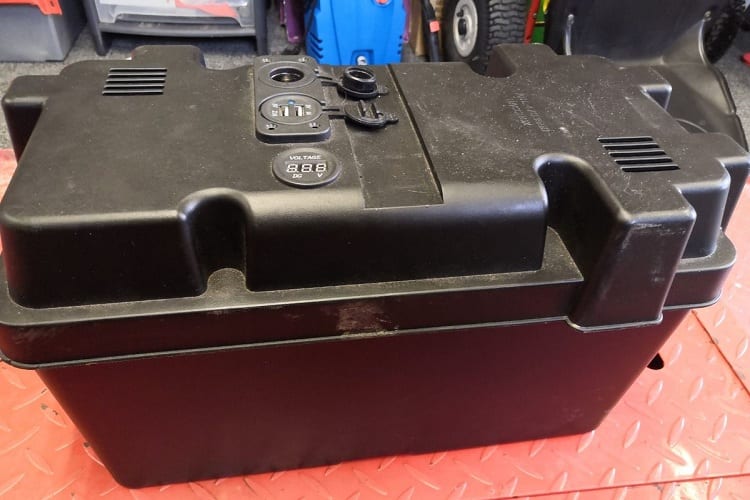
The battery box and battery will determine what kind of electronics and appliances you can plug into them. Most commonly, these are 120V appliances that suit most people fine, and will cover many of the things you want to use in your RV.
However, if you have greater needs and would like to plug into 240V appliances, you’ll need an inverter.
An inverter can provide up to 300 watts of power which is more than enough for these requirements, but it adds quite a lot of money to the grand total of your battery box.
This is only recommended if you have the need, otherwise, the extra money spent will be worthless.
#7 Buy For Your Battery Type
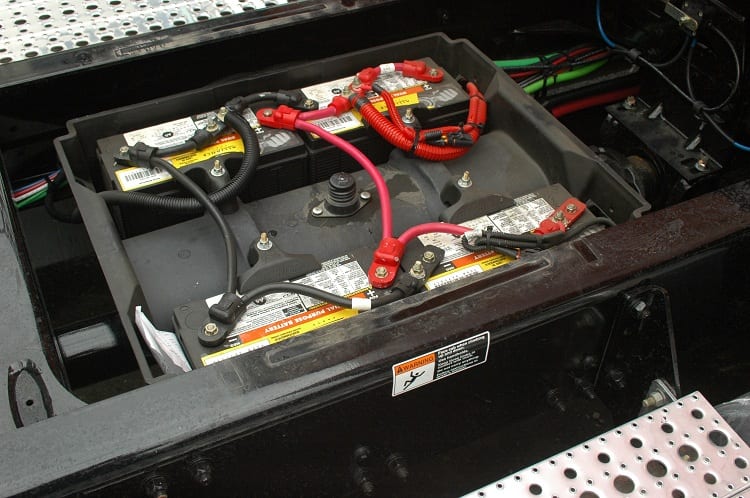
The type of battery you use can also impact what the best box is for it, and most people wrongly assume these covers are suitable for all of them.
You’ll have to determine whether your deep cycle battery is made with wet cell, AGM, Gel Cell, or other lead-acid batteries, or if it features lithium batteries instead.
You should also consider what you want to use in the future so that you don’t also have to upgrade the battery box.
If you’re unsure where to go, choosing one made for AGM batteries is a good idea. These are considered the most reliable option for RV use as they’re safe, affordable, and reliable.
The added bonus is that they work with most battery boxes on the market today so you have some flexibility.
#8 Learn Everything From The Display
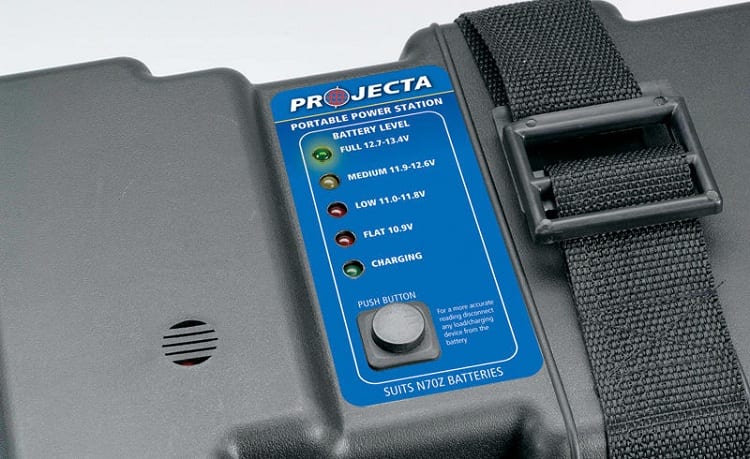
When you’re working with an uncovered battery, you’re essentially going in blind, and have no idea what’s going on inside of it.
With a battery box, you get a detailed description of these readings on the display that’ll show you everything you need to know when you’re relying on portable power.
An RV battery box display will show information like how much charge is in the battery, how many minutes until it goes flat, and a voltmeter that gives you a constant reading of this information.
How and what is displayed will depend on the unit with the cheaper models having an LED light display and more expensive ones featuring an LCD screen with text.
Although it’s not essential to have this type of information, it can be a lifesaver, and if you’re trying to be careful with your battery usage it’s a helpful tool.
#9 Safety First
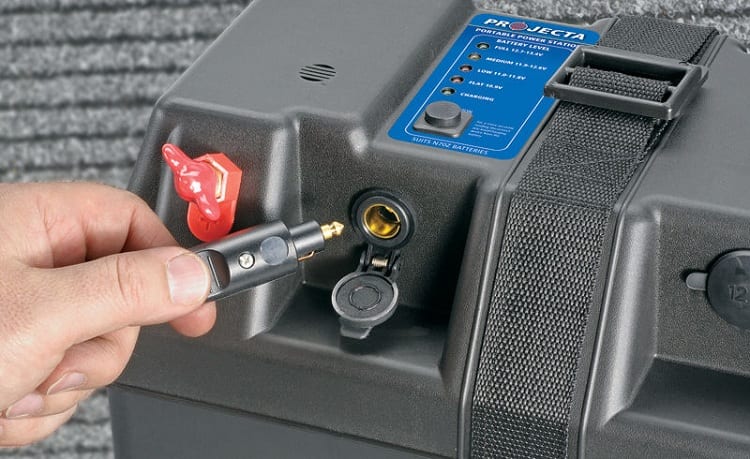
A huge benefit to using a battery box is safety, and this includes the safety that your battery will get from the harsh elements, as well as keeping you and your family safe from potential electric shocks.
However, these boxes also come with additional safety features that are a must-have if you rely on 12V power for camping or RV use, and they make them worth their weight in gold.
All battery boxes have both fuses and isolator switches to protect you. Their role is to shut down the battery unit if the power flow gets too high and they operate with your safety in mind.
Just in case a certain appliance or item is drawing too much power than the battery is capable of, it’ll put a stop to it immediately and cut it off.
#10 Charging Made Easy
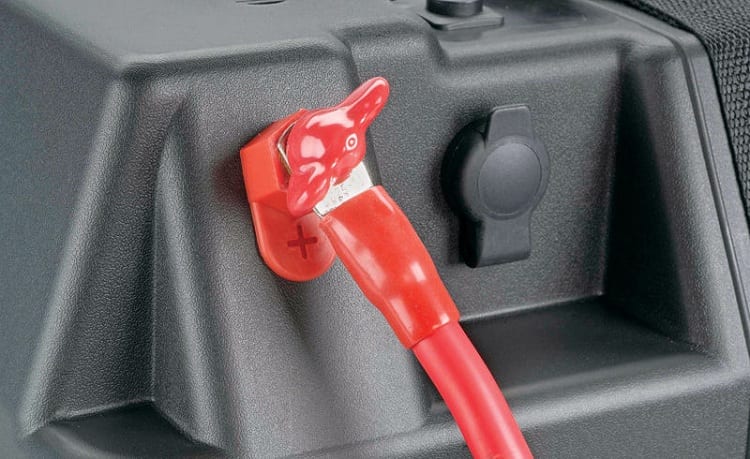
One of the first things people wonder about using a battery box is how they’ll charge it up when it’s running low on power.
Thankfully, these boxes were designed to make this part easy and they’ll come with the right compartments and slots that let you do just that.
There are also safety features included that make it easier than just connecting directly to the battery itself.
Depending on the battery box you choose, you’ll be able to easily connect all types of battery to its negative and positive power terminals, and there are options including alligator clips and Anderson plugs, just to name a few.
In some cases, you can even use a solar panel that connects to the ports and get free, renewable energy instead.
#11 Looks Don’t Matter
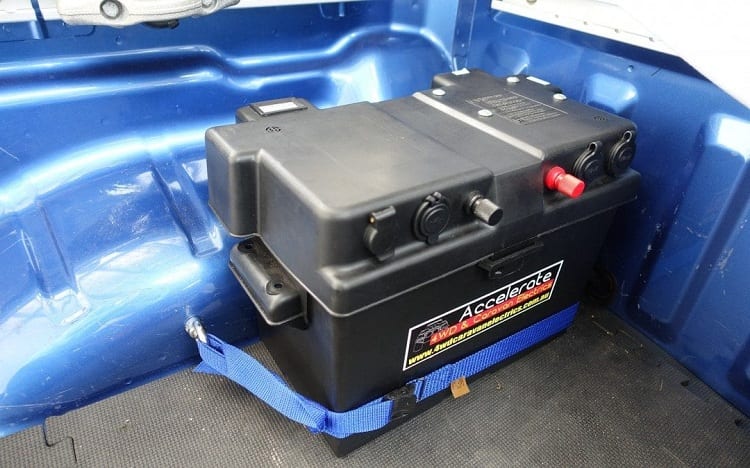
It can be easy to get carried away when shopping for RV gear and accessories when you’re trying to find something that looks good and is practical at the same time.
The battery box isn’t one of those products where looks will matter, so functionality should be the main feature you tick off.
Battery boxes come in many designs, colors, and styles, but ultimately this won’t affect how it’s used.
Choose one with an easy-to-read display, comfortable handle, and durable case rather than trying to match the aesthetics of your RV and other gear.
#12 You Need One for Your House Battery
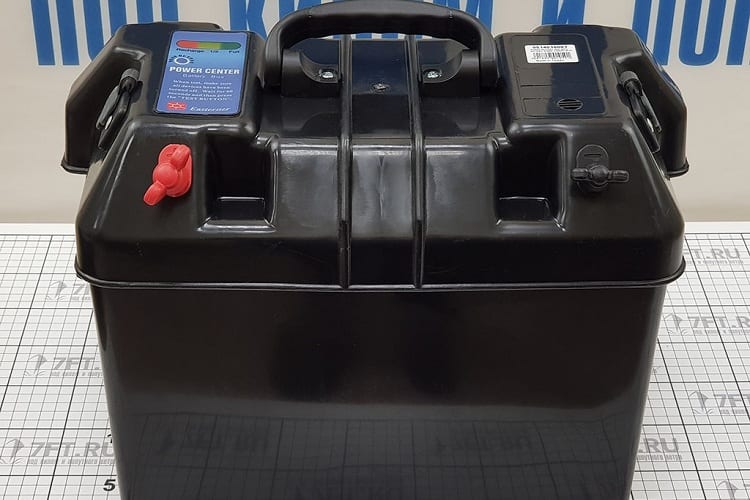
All types of batteries used within an RV need to be housed in a box, but they may already come with a box of some form, including the starting battery used to drive the vehicle.
Most importantly, the house battery that you’ll use to power up your electronics and appliances needs to be protected with a box, so focus on this one predominantly.
When shopping for a deep cycle battery box, you need to think about how it’ll be used to lead you to the right one.
Their main purpose is to manage the battery and its power consumption, provide outlets for connections, protect the battery from damage, and keep you safe from electric shock, so there’s no good having one in your RV without this type of protection.
Related Questions
The batteries of your RV are crucial to this type of moveable living, whether it’s the starting battery or house battery you’re thinking of.
If you want to learn more about how an RV relies on battery power to keep you humming along, read on to see our answers to some commonly asked questions about them.
What Size Battery Do I Need for My RV?
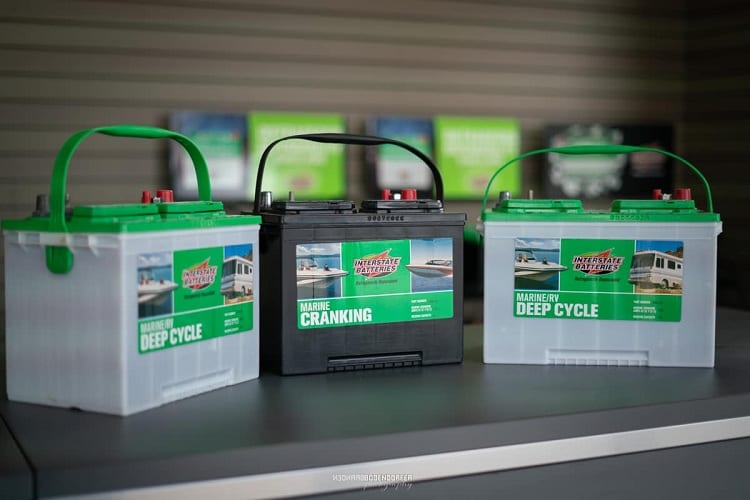
A house battery is used to power up electronics and appliances that you’ll live off from your RV so it has to provide enough power to meet these requirements.
Generally, people use either a 12V deep cycle battery for between 70 to 85 AH of power or two 12V batteries that are wired together to provide between 140 and 170AH.
How Long Does an RV Battery Last?
An RV battery is a big investment but when done right and maintained correctly, it can last for up to six years or more.
The quality of the battery will also determine how long it lasts and how well it’s been looked after, so performing ongoing maintenance is the key to keeping it in good condition.
Resources:

